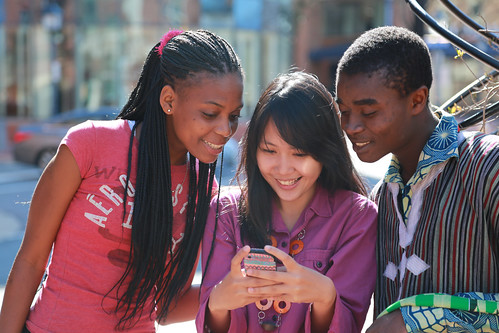
In this section, we will deal with a myriad of issues all dealing with the concepts of differences: racial, ethnic, language, academic, gender, disability, socioeconomic, and sexual preference.
A type of diverse need that we all have includes basic physical and psychological needs, such as the need for belonging, safety, and self-esteem. What does this have to do with teaching you may think? A LOT!! Children from stable, secure homes have very different needs than students who do not have stable, secure homes. Glasser’s choice theory deals directly with meeting these basic physical and psychological needs. The information on adolescent subcultures also relates to Glasser’s concepts. Think of the adolescent subculture of which you were a member. Did you select your group or were you placed into one due to your image according to your peers? Did your “membership” in this group begin with strong ties occurring in the junior high school years and the ties beginning to weaken by the end of high school?
What about diverse gender needs? What are the differences between the genders as they relate to instruction? What do you think this will mean for you as a teacher?
Sexual orientation is a topic that if often difficult for some classes to broach since for many years, it was not part of any curriculum and even seemed a little taboo, but we are going to hop right in and discuss the diverse needs of students who have a gay or lesbian sexual orientation. What are some of the issues that students who are gay/lesbian may encounter in the classroom setting. What are your beliefs about a person having a gay/lesbian sexual orientation? Would any of your beliefs inhibit you from treating gay/lesbian students fairly in your classroom? Please reflect for a moment as this is a situation you may encounter, perhaps not with the students themselves but maybe their parents.
Often we can learn a lot about teaching from looking at our own educational experiences because we often bring these experiences into our own classrooms. Think about how your favorite teacher taught? Have you pictured yourself teaching in that same manner? Think about something a teacher said to you that hurt your feelings; have you already promised yourself that you won’t say something like that ever? Think about how you learn (your learning style), will that be the method that you use as a teacher? You may find it interesting to know that often teachers teach using the same methods that their teachers used. And, sometimes teachers teach to their own preferred learning style as it makes “sense” to them. What do you think?
Candela Citations
- Photo: AFS-USA Intercultural Programs . Authored by: AFS-USA. Located at: https://flic.kr/p/e4pT7X. License: Public Domain: No Known Copyright